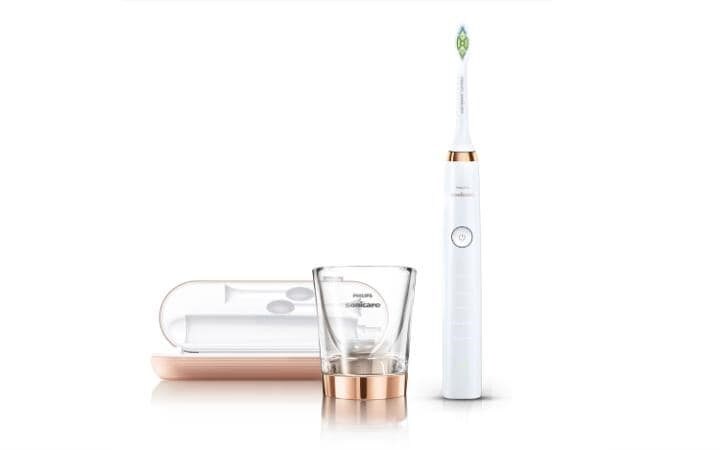Heart and other infections often enter the body through the mouth. The best defence for a healthy heart is simply good brushing.
How do you look after the health of your heart? An active lifestyle? Balanced diet? Relaxation? What about a thorough teeth clean? Current research shows that oral hygiene can have a dramatic impact on general health and, if neglected, can lead to other serious problems such as gum disease, diabetes and heart disease. “If you have poor oral hygiene, you will have more harmful bacteria in your mouth than someone with better oral hygiene. This bacteria has the potential to enter the bloodstream through cuts or abrasions,” explains Dr Ben Atkins, dental practitioner and clinical director of Revive Dental Care, Manchester. “For example, the harmful bacteria that you can find within a dental abscess can enter your bloodstream and subsequently your heart and other areas of your body. There is a definite link between problems in the mouth, such as abscesses and gum disease, and heart disease.” I always recommend to my patients holding an electric toothbrush against each tooth at a slight angle towards the gum line, Dr Atkins Approximately 80-90 per cent of us have some form of gingivitis in our mouths, which is often caused by missing key areas when brushing. Over time, this kind of inflammation of the gingiva (or gums) can lead to periodontal disease and tooth loss. Other factors, such as smoking and diabetes, can weaken the immune system further, making it harder for the body to fight back against mouth bacteria. “I think of the mouth as the gateway to the body, and it and the gums are defended – like any other area of the body – by your blood cells and wider immune system,” says Dr Atkins. “The job of our white blood cells is to protect our bodies from infection and anything that damages this, like smoking or diabetes, dramatically impacts how our body protects itself from things such as bacteria in the mouth. If you already live with a condition such as diabetes, you need to pay close attention to your oral hygiene and be a lot more careful with brushing.” So what exactly is the correct way to brush the teeth? “I always recommend to my patients holding an electric toothbrush against each tooth at a slight angle towards the gum line,” says Dr Atkins. “A lot of people tend to use an electric toothbrush in the same way as a manual toothbrush, which is wrong, and it’s important to let the toothbrush do the brushing for you. Once my patients have adopted this technique they often come back to me and say: ‘Wow, my teeth feel spotless’. You often see a huge improvement in patients’ mouths when they start brushing the correct way.”

Pearly white: the Philips Sonicare toothbrush generates 30,000 strokes per minute
Dr Atkins also advises not rinsing the mouth out with water after brushing, as this washes away the fluoride from the toothpaste. This change alone can reduce dental decay by 20-30 per cent. Additionally, an innovation in technology is helping to strengthen the relationship between a dentist and their patient. The Philips Sonicare electric toothbrush, for example, helps to break bad cleaning habits and encourage better cleaning – by sending email updates directly to the dentist after every use. “The new Sonicare toothbrush is a tool that I can use with my high-needs patients to help change their behaviour within 21 days,” says Dr Atkins. “I had an email today from a patient (or rather his toothbrush) that proved he was brushing his teeth properly and regularly. It allows me to really help educate my patients and develop good habits. It even gives them a slap on the wrist when they don’t brush properly and rewards them with points when they’ve cleaned really well.” Approximately 80-90 per cent of us have some form of gingivitis in our mouths Andy McLaughlin is a patient at Dr Atkins’ practice and has recently started using the Sonicare toothbrush along with an app. “At my first dental check-up, Dr Atkins noticed that I had gum disease around two of my teeth. He suggested I use a Philips Sonicare toothbrush, which came with an app. The Philips Sonicare toothbrush uses patented sonic technology to deliver high frequency and amplitude to the brush, which generates 30,000 strokes per minute. This disrupts and removes plaque biofilm from hard-to-reach areas with gentle back-and-forth sweeps, while forcing fluid in between teeth and along the gum line where bacteria breeds. A slight pause in vibration acts as a gentle reminder to move on to the next area of the mouth every 30 seconds. For more information on oral hygiene and the new Sonicare toothbrush, visit philips.co.uk/sonicare and your local dental surgery
I’m from the pre-smartphone generation, so I was dismissive of the benefits. But having used this for the past two weeks, it has dramatically improved my oral hygiene.”
